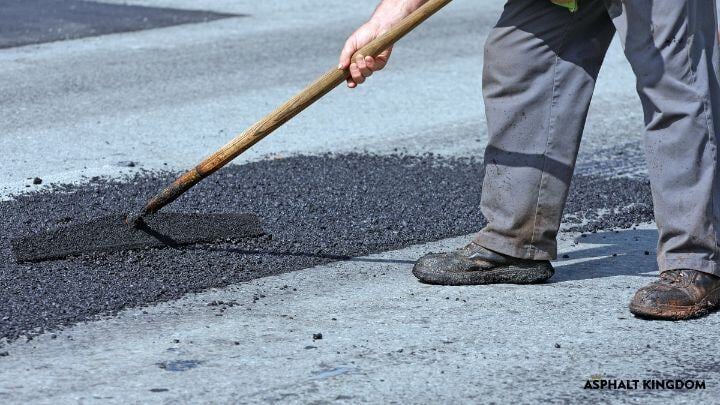Sealcoating is one of the most important measures a property manager can take to maintain the long-term health of an asphalt surface. It creates a barrier that will protect the blacktop from constant threats. The job doesn’t end once the sealer has stopped spraying, though. To reap the full benefits of complete asphalt maintenance, there are several additional steps you should take after you’re done sealcoating.

1. Keep Traffic Off The Surface
It might be tempting to allow traffic onto the asphalt soon after you’ve applied a fresh layer of sealer, especially since it will feel dry to the touch and ready to walk on after just a few hours, but it’s important to be patient—or else you might undo the hard work you put in to protect and beautify it.
Permitting traffic onto the asphalt too soon after sealcoating can result in scuff marks as vehicles turn their tires, and the heavier the vehicle, the worse the marks.
For the best outcome, use cones, tape and other barriers to keep traffic off the asphalt for at least 24 hours after sealcoating.
2. Clean Stains Immediately
Cars and trucks can still pose a threat to freshly sealed asphalt, even after it’s had enough time to cure. Fuel, oil, transmission fluid or antifreeze spills can damage both the sealer and the asphalt below, so it’s critical to clean these stains as quickly as possible.
A degreaser will help clear up oil stains. For others, dish soap, water, and a scrub brush will do the trick.
3. Spray Down The Asphalt
Your asphalt surface accumulates dust and debris over time. Spraying it down every month or so will keep it looking nice and clean. The best way to do this is with a pressure washer—just be sure to keep it on a light setting so you don’t damage the asphalt in the process!
4. Linestripe
If you’ve just sealcoated your asphalt surface, it’s likely you’ve covered up your parking lot lines, which means you should restripe the pavement immediately after the coat has dried. Otherwise, it will look unfinished, and your traffic will be disorganized.
Follow these steps before linestriping. You may be eager to add finishing touches to the blacktop, but taking time to prepare will help you achieve optimal results.
- Check the weather to make sure the temperature is high enough.
- Carefully measure out the parking spaces and traffic symbols.
- Check state and federal regulations to make sure you're in compliance
- Choose the best line striping machine.
How to Price a Linestriping Job Profitably
- What tools & equipment you should start with
- How to determine difficulty level of the job
- How to estimate prep work
- The best traffic paint to use
These tips will help your freshly sealed asphalt stay in top condition, but they aren't the end of the required maintenance. It’s an ongoing process demanding frequent attention. Even after you’ve sealcoated and linestriped, keep your eye out for other evidence of damage, such as cracks.
If you keep up with regular maintenance, especially after sealcoating, your asphalt surface can last decades. Learn about all the steps of asphalt maintenance from our free email guide on Pavement Maintenance.
Explore Asphalt Kingdom’s shop to find all the sealcoating equipment and supplies your property needs. Asphalt business owners can also find an in-depth guide to sealcoating, crack repair, and running an asphalt maintenance business in the Asphalt Kingdom Build Your Own Business Blueprint. So what are you waiting for? Get started now!






